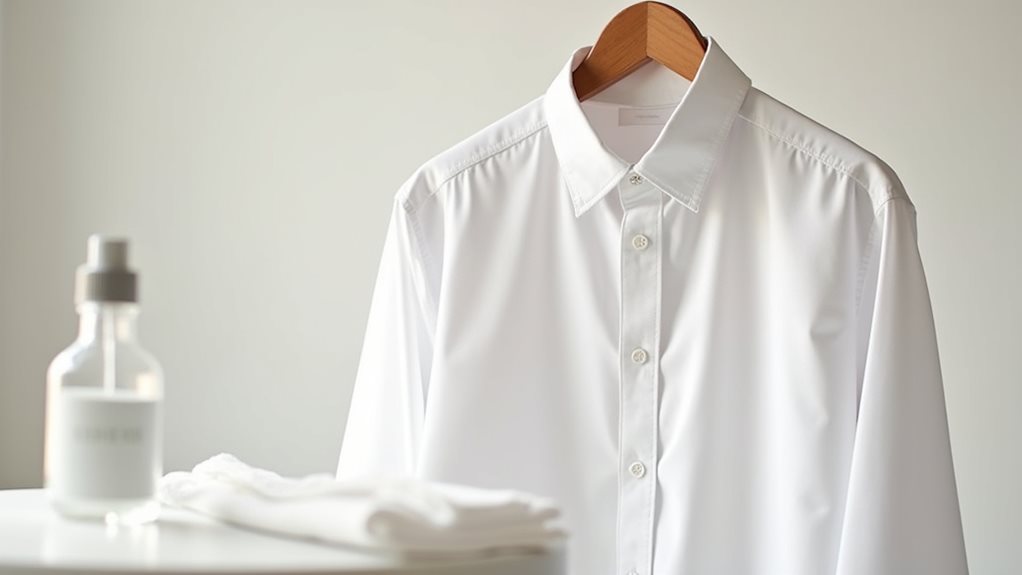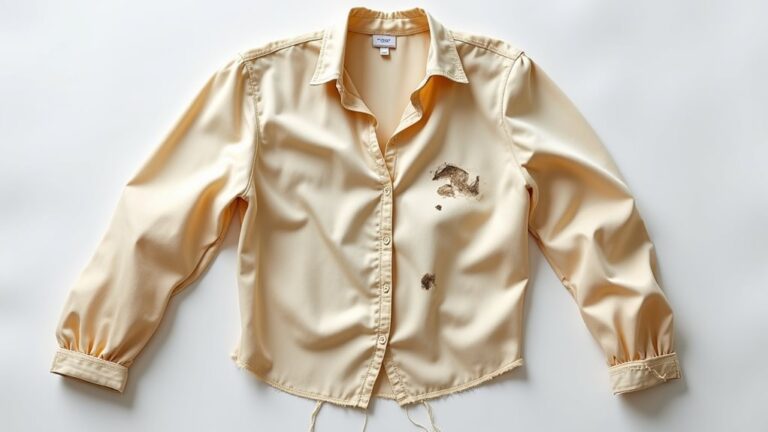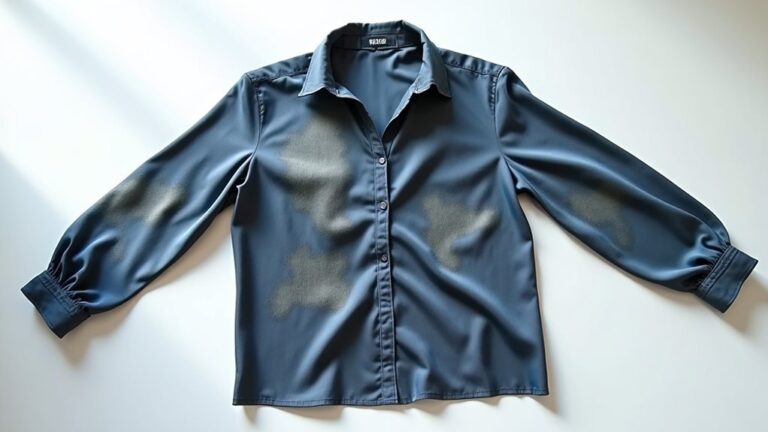Yes, dry cleaning absolutely cleans your clothes—and honestly, it’s often better than regular washing for certain items. Instead of water, dry cleaners use chemical solvents that excel at removing oil-based stains like makeup, grease, and sweat marks that your home washer might leave behind. It’s particularly magical for delicate fabrics like silk, wool, and those fancy garments with sequins or structured details that would get ruined in your machine, and there’s fascinating science behind why this waterless process works so effectively.
What Is Dry Cleaning and How Does It Work?
The mystery behind those crisp, perfectly pressed shirts hanging in your closet often lies in a fascinating chemical dance that happens far from your home washing machine.
You see, the dry cleaning process doesn’t actually involve any water at all—it’s like giving your delicate fabrics a luxurious chemical spa treatment instead. Your garments get tumbled gently in a specialized dry cleaning machine filled with powerful solvents, typically perchloroethylene, which can remove stains that water-based cleaning processes simply can’t touch.
Think of it as targeted therapy for your favorite silk blouse or wool suit.
The complete process includes garment inspection and tagging, pre-treatment of stains, machine agitation in solvent, and a distillation process that purifies and recycles the cleaning solution for future use.
Modern facilities are increasingly exploring environmentally friendly alternatives, because let’s face it, we all want clean clothes without harming our planet 🌍.
The Science Behind Dry Cleaning Solvents
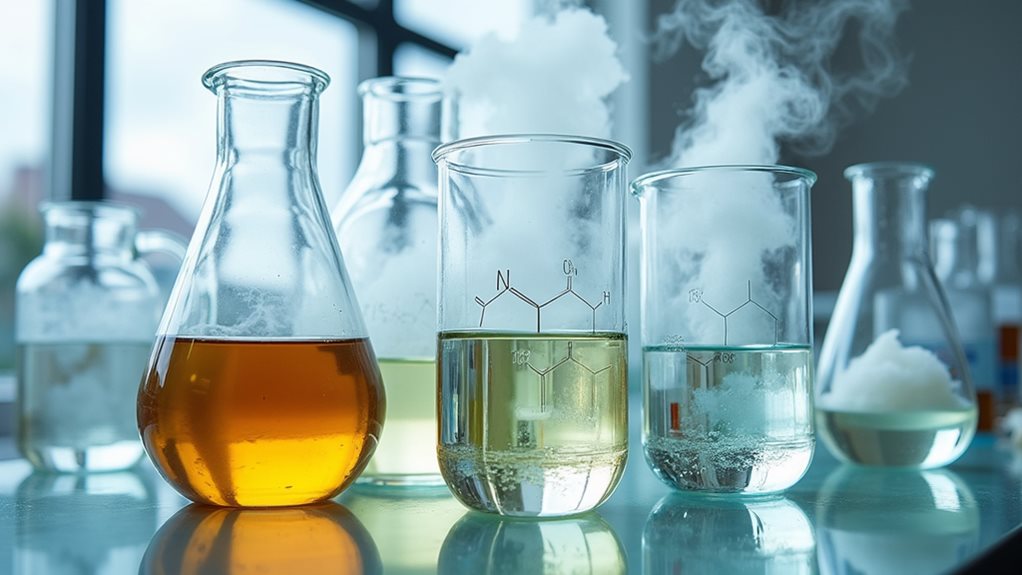
When you dig deeper into the molecular magic happening inside those industrial dry cleaning machines, you’ll discover that choosing the right solvent isn’t just about removing stains—it’s about understanding the fundamental chemistry that makes your favorite cashmere sweater look brand new again.
These dry cleaning solvents work because they’re non-polar, meaning they attract oil-based stains like magnets while leaving delicate fabrics completely unharmed.
Perchloroethylene has dominated this cleaning process since the 1930s, though its environmental impact has sparked innovation in safer alternatives.
What’s brilliant is how these solvents prevent the fiber swelling and color bleeding that water causes, which is why your silk blouse emerges pristine instead of resembling a sad, shrunken science experiment gone wrong! 😅
Modern hydrocarbon solvents provide a gentler cleaning approach with significantly reduced environmental impact compared to traditional perchloroethylene.
Which Fabrics and Garments Benefit Most From Dry Cleaning?

While understanding the chemistry behind dry cleaning solvents gives you the foundation, knowing which fabrics actually need this special treatment can save you both money and heartbreak when your favorite garments are involved.
Delicate fabrics like wool, silk, and acetate can’t handle water without shrinking or losing their luxurious feel – trust me, I’ve learned this the hard way with a cashmere sweater that became doll-sized.
Nothing breaks your heart quite like watching your favorite cashmere sweater shrink down to toddler size after one wash cycle.
Your embellished pieces with sequins, lace, or intricate buttons also need this gentle cleaning method to prevent damage.
Lined jackets, pleated skirts, and even household items like curtains benefit from dry cleaning’s ability to remove stubborn stains without the structural chaos that water can cause to these special garments.
Garments with special construction features such as structured blazers and suits with interfacing require professional dry cleaning to maintain their shape and prevent damage from the agitation and heat of conventional washing processes.
Dry Cleaning vs. Traditional Washing: Key Differences
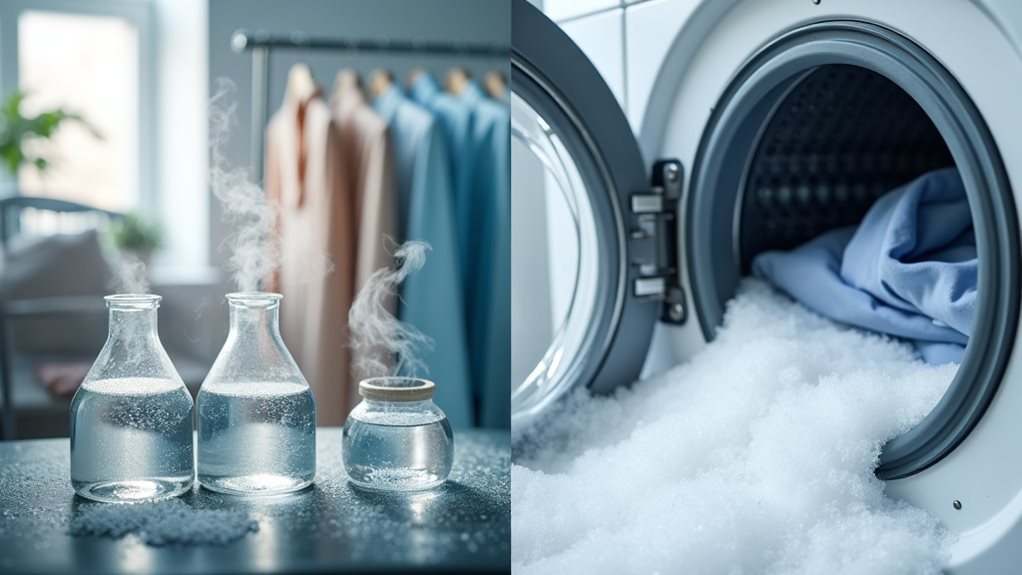
Now that you’ve got a handle on which fabrics deserve the VIP treatment, let’s plunge into what actually sets dry cleaning apart from tossing your clothes in the washing machine – because honestly, I used to think dry cleaning was just fancy marketing until I ruined my first silk blouse with regular detergent 😅.
The core difference lies in how each method tackles dirt: dry cleaning uses chemical solvents like perchloroethylene instead of water and detergent, making it incredibly effective for oil-based stains and delicate fabrics that would shrink or bleed in traditional washing.
While your home washing machine follows a simple wash-and-dry cycle, dry cleaning involves multiple steps including inspection and pre-treatment, though it does carry greater environmental impact concerns.
After the solvent bath, garments go through a drying and pressing process that helps restore the original appearance and structure of your clothing.
The Step-by-Step Dry Cleaning Process
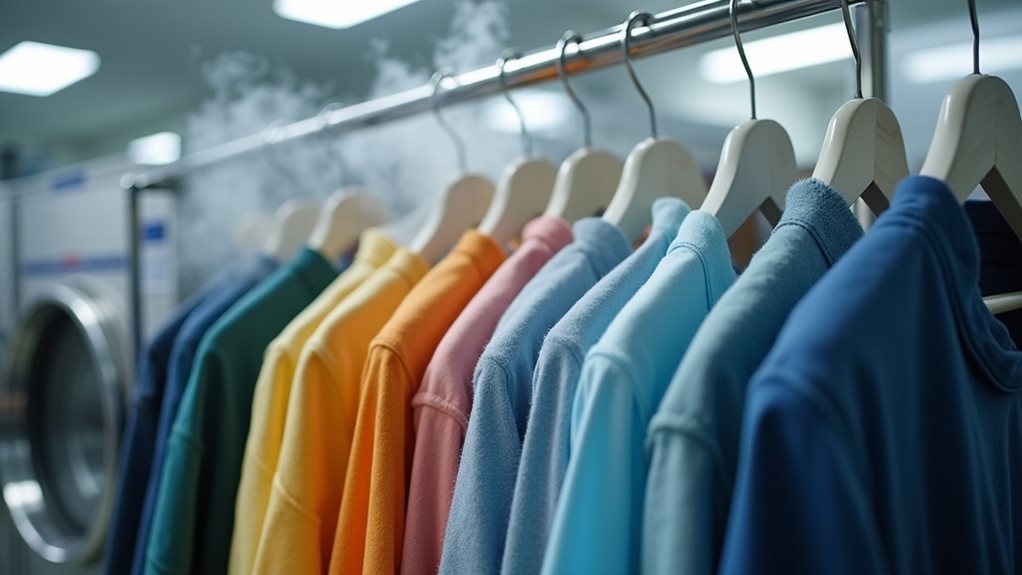
When you drop off your favorite blazer at the dry cleaner, you’re probably curious about what actually happens behind those mysterious curtains, and honestly, I was too until I started paying attention to the fascinating process.
Your garments commence a carefully orchestrated expedition that begins with tagging and inspection, moves through a specialized solvent cleaning cycle that’s nothing like your home washing machine, and concludes with professional finishing and pressing that transforms wrinkled fabric into crisp perfection.
Think of it as a spa day for your clothes, where each step serves a specific purpose in bringing your garments back to life, and trust me, understanding this process will make you appreciate why that cleaning fee is worth every penny 💫.
The industrial machines use specialized solvents like perchloroethylene or eco-friendly alternatives such as hydrocarbon and liquid CO2 that dissolve oils and grease without the water damage that could ruin delicate fabrics like silk and wool.
Garment Tagging and Inspection
The first step in any professional dry cleaning operation starts with something that might seem mundane but actually determines whether your favorite silk blouse comes back looking pristine or goes missing in the cleaning limbo – garment tagging and inspection.
Your dry cleaner assigns each piece a unique identification number, because trust me, you don’t want your cashmere sweater taking an unexpected vacation to someone else’s closet!
During this critical inspection phase, trained professionals examine every inch for stains, damage, or forgotten treasures in your pockets (yes, that lipstick you’ve been searching for).
This detective work directly influences the pre-treatment strategy, determining which specific chemicals will tackle those stubborn marks before your garments enter the dry cleaning machine with its organic solvents for the actual cleaning process.
The inspection also helps cleaners identify delicate fabrics that require special handling to prevent damage from the chemical solvents used in the cleaning process.
Solvent Cleaning Cycle
After your clothes have been tagged and inspected like precious cargo preparing for an expedition, they finally enter the heart of the dry cleaning operation – the solvent cleaning cycle, where the real magic happens in what I like to think of as a very sophisticated washing machine that never uses water.
Your garments get gently agitated in perchloroethylene, a dry cleaning solvent that’s remarkably effective at dissolving stubborn stains without harming delicate fibers like silk or wool.
The entire cleaning cycle lasts just 8–15 minutes, during which this non-polar solvent works its chemistry magic, solubilizing dirt and oils that water simply can’t touch.
Any pre-treatment applied earlier helps the solvent tackle those particularly challenging spots with surgical precision.
Once the cleaning cycle is complete, garments undergo solvent extraction and drying to remove any remaining chemical solvents before moving to the final stages of the process.
Finishing and Pressing
Fresh from their solvent bath, your clothes emerge like they’ve just completed a spa treatment, but honestly, they’re not quite ready for their grand reveal yet – think of this moment like stepping out of the shower before you’ve dried off and gotten dressed.
Your garments undergo a second inspection where eagle-eyed professionals hunt down any stubborn stains that might’ve survived the solvent cycle.
Then comes the finishing magic: pressing, ironing, and steaming that transforms wrinkled messes into crisp perfection.
Professional dry cleaners use specialized equipment that’s way beyond your home iron – these machines respect delicate fabrics while banishing every wrinkle.
This careful pressing and finishing process restores your garment’s original shape and appearance, ensuring it looks exactly as it should.
Finally, they wrap everything in protective plastic, completing this meticulous process within hours to a day.
Advantages and Disadvantages of Dry Cleaning
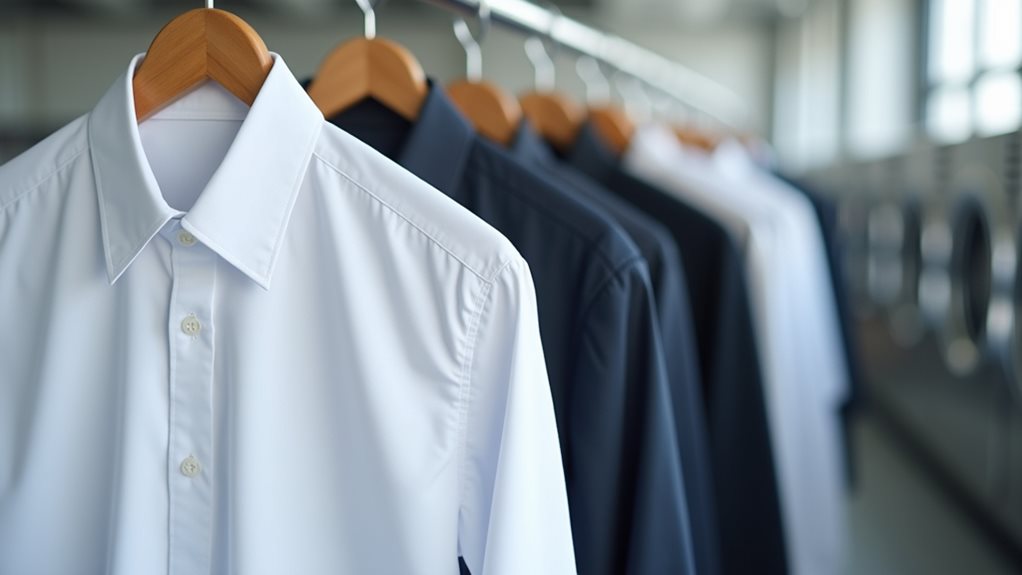
While I’ll admit I used to think dry cleaning was just a fancy way to spend money on something I could do at home, I’ve learned there are genuine trade-offs worth considering when you’re deciding whether to take your clothes to the professionals.
The advantages are pretty compelling – dry cleaning tackles oil-based stains that’ll make your washing machine wave the white flag, and it keeps delicate fabrics from shrinking into doll clothes. Your garments maintain their shape and softness beautifully.
However, the disadvantages include higher costs and serious environmental concerns about solvents like perchloroethylene, which can be toxic. Plus, certain fabrics like plastic or PVC can’t handle the process at all. Beyond immediate health risks, these harsh solvents can gradually break down fabric fibers, reducing the lifespan of your clothing over time.
Environmental Considerations and Alternative Methods

Looking back on my own path toward more conscious living, I can’t help but feel a mix of guilt and hope when I think about the environmental impact of traditional dry cleaning.
The journey toward sustainable choices often begins with recognizing our past environmental missteps and embracing greener alternatives.
The dry cleaning industry has relied heavily on perchloroethylene, a known carcinogen that contaminates our air and water sources, making me wonder how many times I unknowingly contributed to this problem.
Fortunately, alternative cleaning methods are transforming the setting:
- Wet cleaning uses biodegradable detergents and water instead of harsh chemicals.
- Liquid carbon dioxide cleaning eliminates harmful solvents entirely.
- Eco-friendly solvents like silicone-based options protect both human health and our planet.
You can now choose dry cleaners offering these sustainable alternatives, aligning your clothing care with environmental consciousness.
When selecting a dry cleaner, it’s important to research local dry cleaners’ practices to ensure they truly use eco-friendly methods that reduce chemical exposure and minimize environmental impact.

